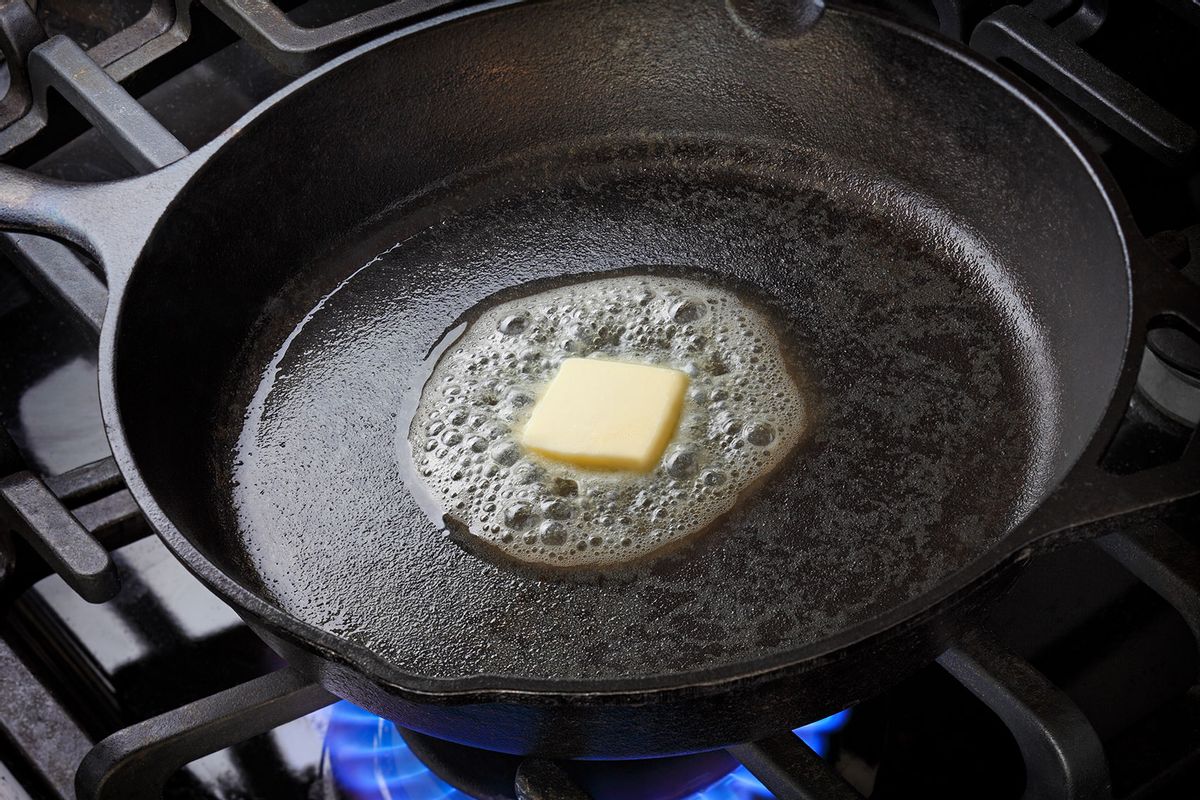In culinary school, I learned that the French term for browned butter is "buerre noisette," which translates to "butter hazelnut." I think this encapsulates the flavor of the prized ingredient much better than the English terminology, which is strictly referring to its color and aesthetic, whereas the hazelnut references is instead commenting on the flavor itself. How a product that is strictly dairy-based somehow takes on nutty, warm, deep flavors just from a bit of heat being applied to it has always amazed me.
At some point within the past decade or so, brown butter truly became a "thing," gracing every possible food or food-adjacent publication or website with widespread appeal, sneaking into everything from burgers to brownies like a thief in the night. It's by no means a "new" product or discovery, though; Julia Child wrote about it extensively and used it in many recipes in her iconic, cherished tome "Mastering the Art of French Cooking."
And if we're being frank — it's all the rage is for good reason. Brown butter's aforementioned unique, rich flavor (of toasted hazelnuts by way of melted dairy) adds a dimension and complexity to a cornucopia of foods, dishes and recipes. There's a depth that comes through when brown butter is included in a dish, whether it's added to a base, batter or dough, or if it's merely drizzled on top.
The combination of sage and brown butter — especially in conjunction with a filled pasta — is arguably its truest "essence," but it's just as welcome in a cake batter or custard base. I especially love it with breadcrumbs, roasted root vegetables, as a topper for soups or gussied up with fresh herbs, garlic and cream before being doused over a cheese-laden roasted chicken breast. It's also become a requisite ingredient in all of my chocolate chip cookies.
Want more great food writing and recipes? Subscribe to Salon Food's newsletter, The Bite.
What is brown butter?
As Leora Bloom notes in The Seattle Times, "Butter consists of water, butterfat and milk solids. When it's heated, the water evaporates, the butterfat melts, and some of the milk solids float on the top while the rest sink to the bottom. As the temperature of the butterfat rises, the milk solids begin to brown and give a toasted flavor and nutty aroma to the butterfat."
The other cool part about brown butter is that in most instances, you already have all you need on hand: butter, a stove and a pan. At the same time, though, making brown butter well can be tricky; the borderline between burnt butter and browned butter is just about a few seconds.
I tried to get as precise as possible here so as to avoid any sort of variable or unforeseen issue which may otherwise affect your brown butter. It is so darn good and I want you to experience it to the fullest!
Note: Brown butter is not to be confused with clarified butter or ghee, which is a clarified butter devoid of all frothy milk solids, whereas brown butter incorporates these milk solids.
How to brown butter
1. Warm a large, heavy, wide skillet over medium-low heat.
2. Add a stick or two of high-quality, unsalted butter, cut up into 1-inch chunks, which will help the butter melt more evenly.
3. Warm through until butter melts.
4. The butter may start to sputter, which results as the water cooks off and the butter pops — so take cover! Turn the heat down if it's especially outrageous.
5. Soon, a foam of sorts will form, and this is when you should be stirring or swirling the pan, ideally with a whisk.
6. You will soon see slightly browned milk solids which might look like little flecks submerged in the melted butter. Shortly after, you'll notice that smell: nutty, like browned, toasted hazelnuts, or even a bit of a caramel note. This is also the point in which the color should shift and become a toasty, light brown.
7. You can turn the heat off right away upon seeing the browned milk solids, or be a bit more experimental and let them darken even more.
8. As soon as you remove from the heat, pour into a bowl or food storage container to stop the cooking right away. The brown butter is now ready for use!
Note: Some opt to strain out the milk solids, for a smoother or clearer brown butter final product, but I find that that kind of defeats the purpose and also reduces the overall flavor, so I wouldn't recommend it.
Best uses for brown butter:
- Tossed with breadcrumbs which are then toasted and crisped
- Poured over popcorn which is then tossed with salt
- Add to vanilla extract or vanilla bean paste before using in baked goods recipes
- Add to minced garlic and drizzle over broiled fish
- Add to sliced fruit and serve over ice cream
- Used in your favorite pie crusts or doughs
- Whipped into a frosting or icing
- Used in a fruit tart
- Tossed with root vegetables and roast
- Enjoyed in a cocktail or warmed beverage
- Simmered with lemon and capers in a piccata-like sauce
- Added to cookies, cakes, brownies, Rice Krispies and other sweet treats
- Added to banana bread batters
- Swirled with maple syrup and poured over French toast, pancakes, waffles and the like
- Incorporated into cinnamon bun doughs or drizzled on top
- Added to biscuits
- Cooked with eggs in any style
- Used as a base to sauté proteins
- Incorporated into risottos or pasta dishes
- Stirred into mashed potatoes or polenta
...and so on and so forth! The options are truly endless.
Read more
about this topic
Salon Food writes about stuff we think you'll like. While our editorial team independently selected these products, Salon has affiliate partnerships, so making a purchase through our links may earn us a commission.



Shares